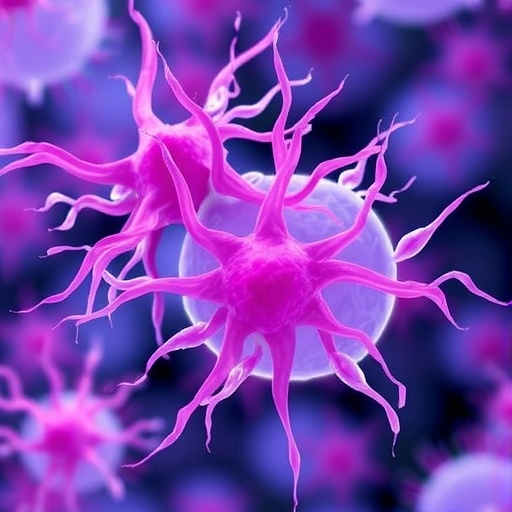Klebsiella pneumoniae, a notorious Gram-negative bacterium, presents a significant challenge in healthcare environments due to its role as an opportunistic pathogen. It is responsible for a variety of serious infections including pneumonia, urinary tract infections, and septicemia. Recently, the rise of antimicrobial resistance has exacerbated the threat posed by this organism, limiting the effectiveness of conventional treatment regimens. As a direct consequence of the extensive use of antibiotics such as aminoglycosides, quinolones, and β-lactams, we have witnessed a disturbing trend of increased resistance in K. pneumoniae.
This bacterium’s ability to adapt and develop resistance mechanisms is a multifaceted issue that is increasingly drawing attention from the scientific community. Understanding the molecular basis of drug resistance in K. pneumoniae is essential for developing effective treatment strategies. One of the primary mechanisms of resistance observed is the production of β-lactamases. These enzymes hydrolyze the β-lactam ring found in antibiotics, rendering them ineffective. The emergence of various types of β-lactamases, particularly Extended Spectrum β-Lactamases (ESBLs) and Carbapenemases, complicates the treatment landscape significantly.
Another critical contributor to the resistance phenotype in K. pneumoniae is the overexpression of efflux pumps. These membrane-bound transport proteins actively expel a range of antibiotics from the bacterial cell, thereby reducing drug concentration inside and allowing the bacterium to survive even in the presence of antimicrobial agents. This mechanism not only contributes to resistance but also facilitates the establishment of multidrug resistance, posing a great challenge for clinical outcomes.
Modifications of target sites also play a pivotal role in conferring resistance. Bacteria can alter the specific binding sites where antibiotics exert their effects, thereby diminishing the efficacy of these drugs. For instance, in the presence of certain antibiotics, K. pneumoniae may mutate target genes or employ alternative pathways to propagate without being inhibited. This form of resistance complicates the traditional methods used to combat bacterial infections, necessitating a tailored approach to antibiotic therapy.
Additionally, reduced membrane permeability contributes to the resilience of K. pneumoniae against antimicrobial agents. The outer membrane of Gram-negative bacteria acts as a barrier, which can be modified to limit the entry of various antibiotics into the cell. This modification can occur through the loss of porins or the alteration of their expression, making it harder for drugs to exert their antimicrobial effects. The interplay of these resistance mechanisms significantly elevates the threat level of this pathogen in healthcare settings.
Beyond inherent mechanisms of antibiotic resistance, the ability of K. pneumoniae to acquire resistance determinants from other bacteria through horizontal gene transfer adds another layer of complexity. This transfer can occur via plasmids, integrons, and transposons, which allow the rapid dissemination of resistance genes among bacterial populations. Consequently, once a strain of K. pneumoniae develops resistance, it can share these traits with other strains, rapidly propagating resistance within environments, particularly in hospitals where antibiotic pressure is high.
The implications of these resistance mechanisms extend to infection control practices and antibiotic stewardship programs. Understanding the pathways through which resistance spreads is vital for developing effective infection control strategies. By implementing rigorous surveillance and control measures, healthcare facilities can combat the rapid emergence and spread of resistant strains, thereby enhancing patient safety and care.
Research focused on K. pneumoniae is fundamental in shaping future clinical practices. By elucidating the mechanisms underlying resistance, researchers can contribute to rational antibiotic selection, which maximizes treatment efficacy while minimizing the risk of further resistance development. In a landscape dominated by fear of resistant infections, such research informs guidelines that prioritize the use of antibiotics that are less susceptible to resistance mechanisms.
The attention to this pathogen has sparked ongoing efforts to develop novel anti-resistance strategies. This includes exploring alternative therapeutic agents, finding adjunct therapies that can enhance the efficacy of existing antibiotics, and the development of vaccines targeting K. pneumoniae. In light of the global threat posed by resistant pathogens, it is imperative that the scientific community remains vigilant and proactive in addressing the challenges of antibiotic resistance.
Innovative approaches such as phage therapy, which employs bacteriophages to target and destroy specific bacterial pathogens, are also gaining traction. Such explorations may provide novel avenues to combat infections caused by K. pneumoniae, especially those that are resistant to conventional treatment modalities. In conclusion, the fight against K. pneumoniae and its associated resistance mechanisms requires an integrated effort encompassing research, clinical practices, and innovative therapeutic strategies.
As we look to the future, raising awareness of the importance of antibiotic stewardship and the dangers of overusing antibiotics remains crucial. Educating healthcare professionals about the molecular mechanisms of resistance can empower them to make informed choices in the face of rising resistance, thereby ensuring that effective therapies remain available for patients suffering from infections caused by K. pneumoniae.
In summary, the evolution of K. pneumoniae into a resilient and formidable pathogen highlights the urgent need for comprehensive strategies to tackle antimicrobial resistance. By investigating its molecular bases of resistance and understanding the mechanisms behind gene transfer, we stand a better chance of mitigating the effects of this public health threat, ultimately preserving the efficacy of antibiotics for future generations.
Subject of Research: Mechanisms of antibiotic resistance in Klebsiella pneumoniae
Article Title: The mechanisms of antibiotic resistance and drug resistance transmission of Klebsiella pneumoniae
Article References:
Zheng, S., Li, S., Zhang, D. et al. The mechanisms of antibiotic resistance and drug resistance transmission of Klebsiella pneumoniae.
J Antibiot (2025). https://doi.org/10.1038/s41429-025-00860-5
Image Credits: AI Generated
DOI: https://doi.org/10.1038/s41429-025-00860-5
Keywords: Klebsiella pneumoniae, antibiotic resistance, β-lactamases, efflux pumps, horizontal gene transfer, infection control




